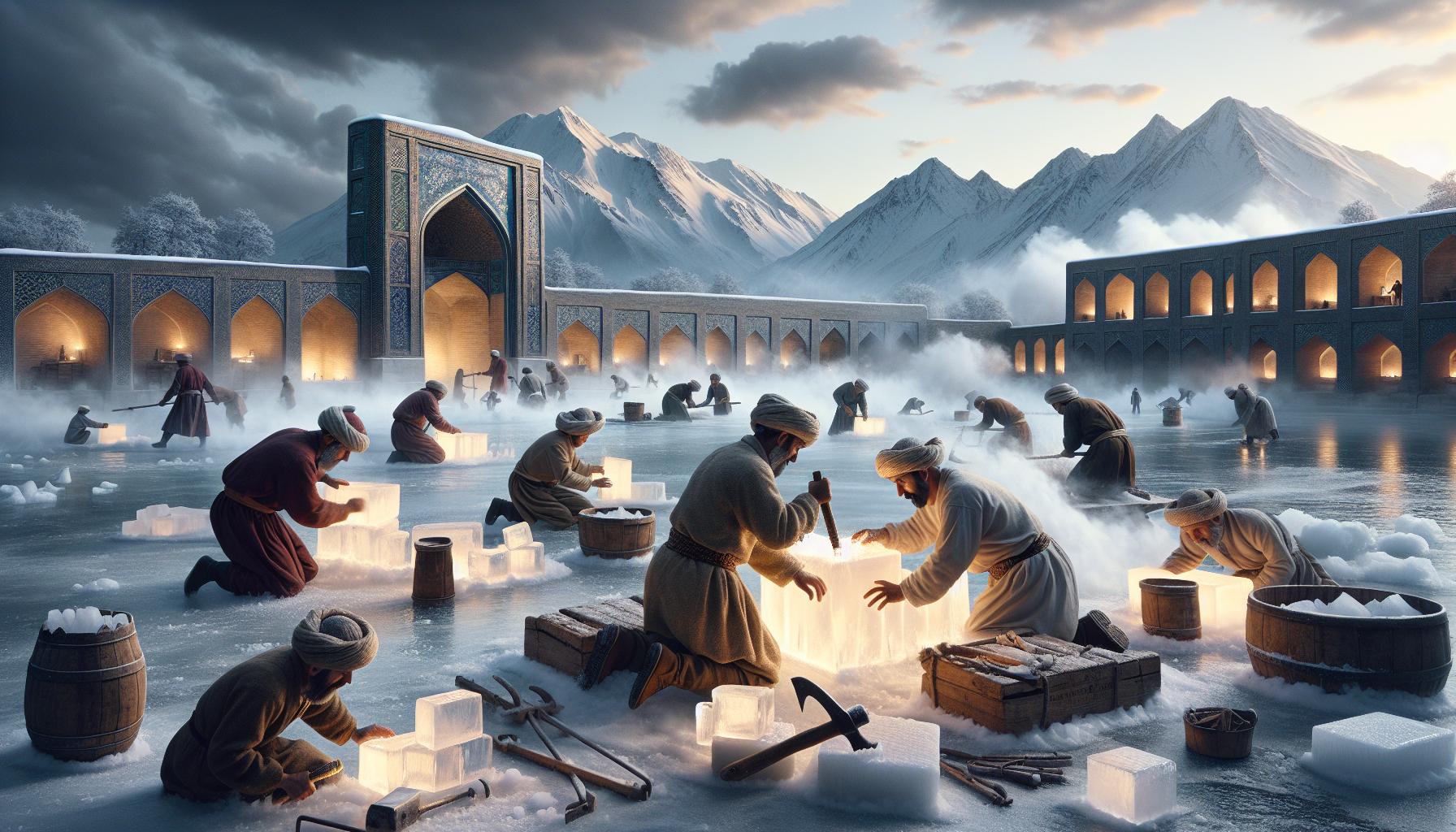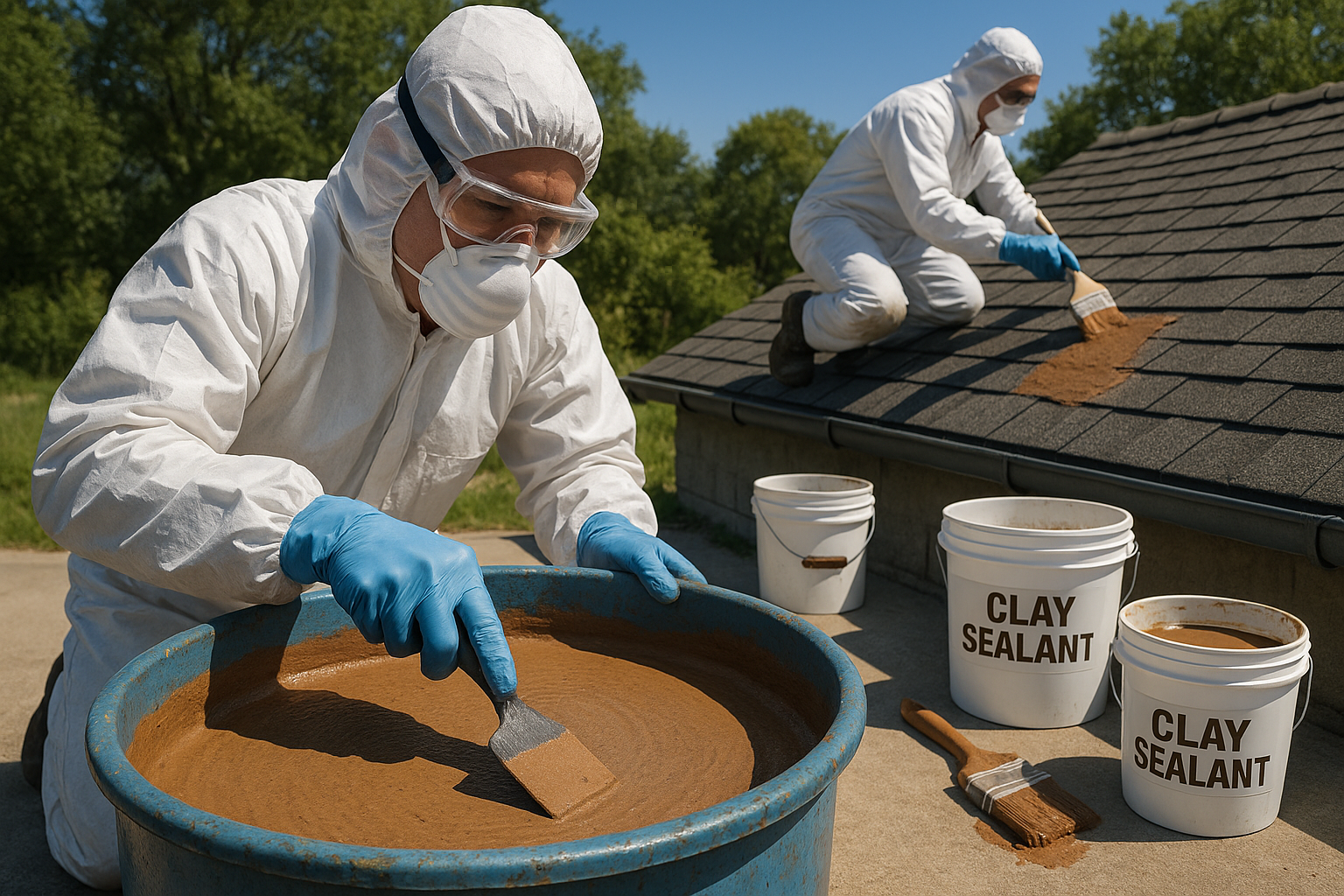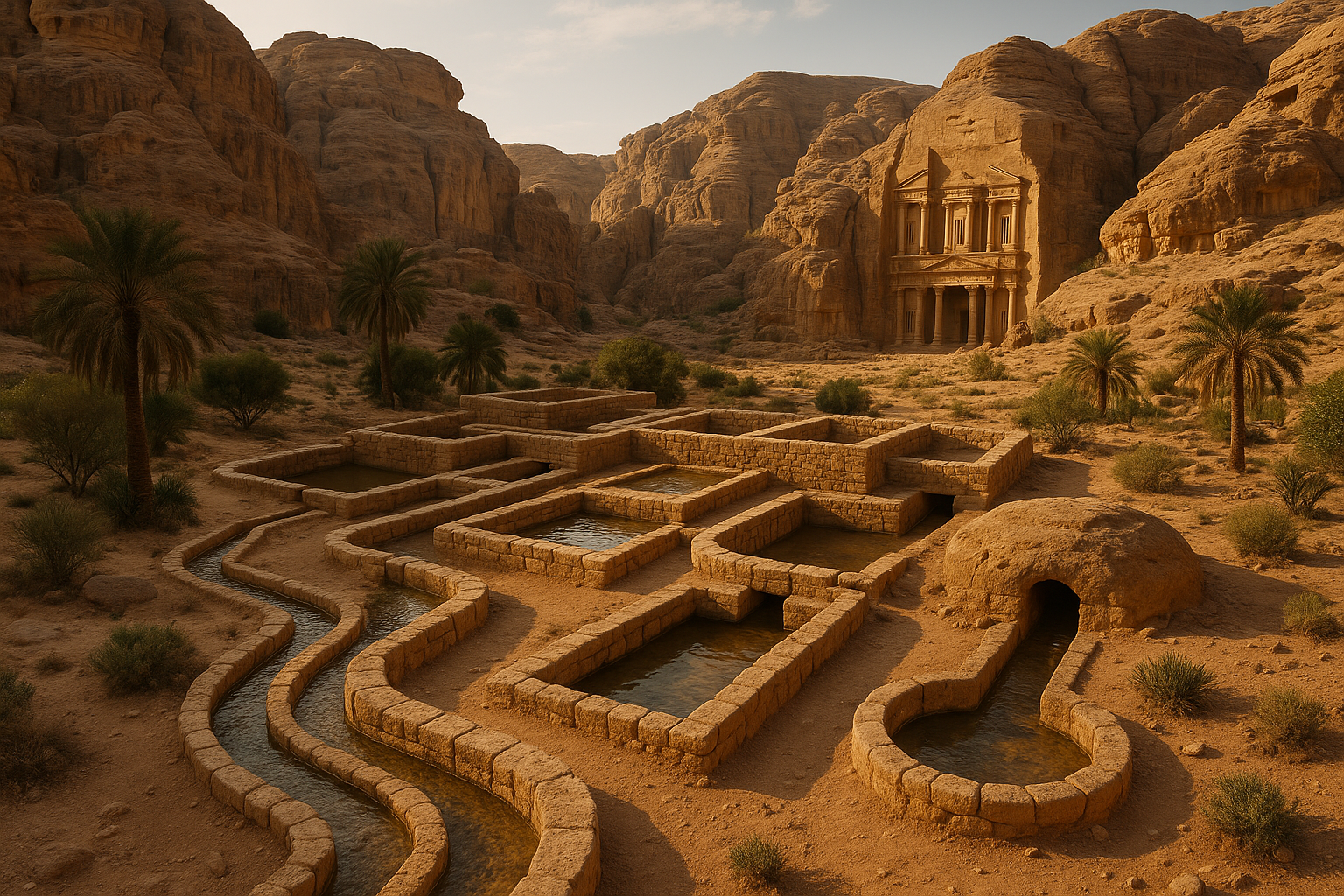In the sweltering heat of a midsummer day, when the sun blazes unrelentingly and modern air conditioning strains under the pressure, have you ever stopped to wonder how ancient civilizations kept their cool? Before the age of electricity and industrial technology, our ancestors devised ingenious methods to battle the heat—methods that were not only effective but also sustainable. One such civilization, the ancient Persians, pioneered a remarkable technique of ice harvesting that can inspire even today’s most advanced cooling technologies. Imagine harnessing the wisdom of the past to revolutionize your approach to staying cool in the present day. 🌞❄️
Picture this: It’s the height of summer in ancient Persia, an empire renowned for its architectural marvels and scientific advancements. Despite the arid climate, the Persians managed to create ice and store it for use throughout the scorching months. How did they achieve this feat without the aid of modern machinery? The answer lies in a sophisticated system of ice houses, known as yakhchals, and a meticulous ice harvesting process that speaks volumes about human ingenuity. By delving into these ancient practices, not only do we uncover a fascinating chapter of history, but we also glean valuable insights into sustainable cooling techniques that are more relevant today than ever before.
In this exploration of Persian ice harvesting, we will unravel the secrets behind the yakhchal—these ancient refrigerators—and how they functioned as both storage and manufacturing sites for ice. We’ll journey through the methods used by the Persians to collect and preserve ice, examining the environmental and architectural innovations that allowed them to defy the climate. From the design of the yakhchal itself, with its conical shape and subterranean chambers, to the strategic use of wind catchers and qanats (underground water channels), every aspect of this ancient technology reveals a deep understanding of natural resources and a commitment to sustainability.
But why should we, in the age of air conditioning and refrigeration, look to ancient Persia for inspiration? The answer is twofold: sustainability and innovation. As our global climate continues to shift, there is a pressing need to develop cooling solutions that are not only effective but also environmentally friendly. By studying the methods of the past, we can adapt these principles to modern needs, crafting solutions that honor both technological advancement and ecological responsibility. The ancient Persian approach to cooling offers a blueprint for reducing energy consumption and minimizing our environmental footprint, while still maintaining comfort and efficiency.
Throughout this article, we will explore the principles of passive cooling embodied by the yakhchal and how they can be integrated into contemporary design. We’ll discuss the modern implications of ice storage techniques and how they can be applied to reduce reliance on energy-intensive cooling systems. By embracing the wisdom of ancient Persia, we can transform our approach to cooling, fostering innovation that bridges the gap between past and present. So, prepare to embark on a journey through time, uncovering the secrets of ancient ice harvesting and discovering how these age-old techniques can revolutionize your cooling game today. Let’s chill out with a touch of history and a dash of modern ingenuity.
The Ancient Persian Ice Harvesting Technique: An Overview
The ancient Persian ice harvesting technique, known as “Yakhchal,” stands as a testament to human ingenuity and environmental adaptation. Developed during the early days of the Persian Empire, this technique allowed the Persians to create and store ice in the arid climate of the Iranian plateau. The Yakhchal was an ancient type of evaporative cooler, a large domed structure made primarily from mud bricks. These structures were not just ice houses; they were marvels of thermal engineering, showcasing an understanding of heat transfer and insulation that was advanced for the time.
Yakhchals were strategically constructed, often utilizing a combination of subterranean chambers and above-ground domes. The underground chambers were dug into the earth, leveraging the natural cooling properties of the ground. Above, the conical dome design facilitated the circulation of cool air. The thick walls, made of a specific kind of mortar called “Sarooj,” combined clay, sand, egg whites, lime, goat hair, and ash, providing exceptional insulation. This kept the internal temperatures significantly lower than the sweltering desert heat outside, enabling the storage of ice well into the summer months.
The ice itself was harvested during the cold desert nights when temperatures dropped below freezing. Shallow pools of water were strategically positioned to freeze overnight. In the morning, the thin layers of ice were collected and stored in the Yakhchal. This ingenious method allowed the Persians to enjoy the luxury of ice-cooled refreshments, even in the midst of the desert. Modern engineers and historians study these ancient techniques, not just out of historical interest, but to explore sustainable and eco-friendly cooling methods that can be applied in today’s world.
Yakhchal Construction: Engineering Marvels of Their Time
The construction of a Yakhchal involved both architectural prowess and a deep understanding of environmental science. The process began with selecting a suitable site, ideally one with a natural slope and access to underground water. The construction utilized local materials, making it cost-effective and sustainable. The primary material, Sarooj, was carefully mixed and applied to form the thick insulating walls. The dome was constructed with precision to ensure structural integrity while maximizing the cooling effect.
Inside, the design included a series of chambers and passages that facilitated air circulation and maintained a stable, cool environment. The height of the dome played a crucial role in the cooling process, as warm air naturally rose and escaped through an opening at the top, drawing cooler air from below. This passive cooling system was efficient and required no external energy source, highlighting the sustainability of the design.
The floor of the Yakhchal often featured a complex network of channels and reservoirs that helped manage the water generated by melting ice. This water was collected and redirected for irrigation or other uses, ensuring minimal waste. This aspect of the design underscores the holistic approach of Persian engineering, where every element served multiple purposes, integrating seamlessly with the surrounding environment.
The Science Behind Yakhchal: Passive Cooling Techniques
Understanding the science behind Yakhchal requires a look at the principles of passive cooling. The concept revolves around maximizing natural temperature differentials and harnessing environmental conditions to achieve cooling. The Yakhchal utilizes evaporative cooling, thermal mass, and strategic airflow management to maintain low temperatures.
Evaporative cooling is achieved through the moisture content in the walls and the presence of water within the structure. As water evaporates, it absorbs heat from the surroundings, reducing the ambient temperature. The Yakhchal’s thick walls provide thermal mass, which helps in stabilizing temperature fluctuations by absorbing heat during the day and releasing it slowly at night.
Airflow management is another critical element. The design of the Yakhchal facilitates the natural movement of air, with cooler air entering from lower openings and warmer air exiting from the top. This creates a convection current that continuously circulates air, enhancing the cooling effect. These principles are now being revisited in modern architectural designs aimed at reducing reliance on artificial cooling systems.
Modern Applications and Innovations Inspired by Yakhchal
The ancient Yakhchal techniques offer valuable insights for modern cooling technologies, especially in an era where sustainability and energy efficiency are paramount. Architects and engineers are increasingly looking to these ancient methods to inspire new solutions. The principles of evaporative cooling and thermal mass are being integrated into contemporary building designs to create energy-efficient and environmentally friendly structures.
One modern application is the development of passive house designs, which prioritize natural cooling and heating. These homes use advanced insulation techniques, strategic window placement, and natural ventilation to maintain comfortable indoor temperatures. The resurgence of interest in such techniques is driven by the need to reduce carbon footprints and adapt to changing climates.
Another area of innovation is the application of Yakhchal-inspired designs in urban planning. Green roofs and walls, which utilize vegetation to provide insulation and reduce heat, are similar in concept to the thermal mass and cooling strategies of Yakhchals. These innovations not only improve energy efficiency but also enhance urban biodiversity and air quality.
Table: Comparison of Ancient and Modern Cooling Techniques
| Aspect | Ancient Yakhchal | Modern Passive Cooling |
|---|---|---|
| Materials | Mud Bricks, Sarooj | Insulated Glass, Eco-friendly Insulation |
| Energy Source | Natural (Passive) | Natural (Passive) |
| Cooling Mechanism | Evaporative Cooling, Thermal Mass | Evaporative Cooling, Thermal Mass, Natural Ventilation |
| Environmental Impact | Minimal | Minimal |
Watch and Learn: Yakhchal Explained
To gain a deeper understanding of Yakhchals, their history, and their relevance today, we recommend watching the following video. It provides an engaging and informative overview of these ancient structures:
By exploring these resources, you can discover how ancient wisdom is being harnessed to solve modern challenges. Whether you’re an architect, engineer, or simply someone interested in sustainable living, the lessons from Yakhchal offer a timeless blueprint for innovation. 🌍

Conclusion
As we conclude our exploration of ancient Persian ice harvesting techniques and their potential to revolutionize modern cooling methods, it’s essential to revisit the remarkable insights we’ve uncovered. The ingenuity of ancient Persia’s yakhchals not only highlights human innovation but also offers sustainable solutions for today’s environmental challenges. These ancient structures, designed to store and preserve ice in arid climates, exemplify a fusion of architecture and environmental science that remains relevant even after centuries.
Yakhchals, with their impressive conical designs, utilized a combination of insulation and evaporative cooling to maintain low temperatures year-round. This ancient method highlights the potential of passive cooling techniques that harness natural resources without relying on modern energy-intensive systems. By employing materials readily available in the environment and optimizing architectural design, Persians were able to create microclimates conducive to ice preservation—a testament to their advanced understanding of thermal dynamics.
The historical context of these structures sheds light on a society that prioritized sustainability long before it became a global imperative. As we face increasing concerns about climate change and energy consumption, revisiting such age-old practices offers us a roadmap for developing eco-friendly innovations. Modern adaptations of these ancient techniques could reduce dependency on conventional air conditioning systems, lowering carbon footprints and promoting greener living.
Furthermore, this topic underscores the importance of interdisciplinary approaches in solving contemporary issues. By integrating historical insights with modern technology, architects, environmental scientists, and engineers can collaborate to create innovative cooling solutions that honor past wisdom while advancing future sustainability. This cross-pollination of ideas not only enhances technological progress but also enriches cultural understanding, reminding us of the interconnectedness of human achievement across time and geography.
The importance of this theme cannot be overstated, as it calls upon us to reassess our current practices and explore alternative strategies that honor both the planet and its history. Ancient Persian ice harvesting is more than a historical curiosity; it is a beacon of innovation, sustainability, and resilience. By embracing these principles, we can inspire a new generation of thinkers and doers committed to forging a harmonious relationship with our environment.
As you reflect on the insights from this exploration, consider how you might apply these ancient techniques in your personal or professional life. Whether it’s rethinking your home’s cooling systems or advocating for sustainable practices in your community, every effort counts toward creating a more sustainable future. 🌍
[For further reading on sustainable practices inspired by historical techniques, consider exploring these resources:
– “Ancient Yakhchals and Their Modern Applications” by [SustainableArchitecture.com](https://www.sustainablearchitecture.com)
– “Environmental Science in Ancient Persia: Lessons for Today” by [EcoInnovate.org](https://www.ecoinnovate.org)
– “The Future of Cooling: Lessons from the Past” by [GreenTechJournal.com](https://www.greentechjournal.com)]
(Note: Ensure the provided links are still active and lead to credible sources for further exploration.)




